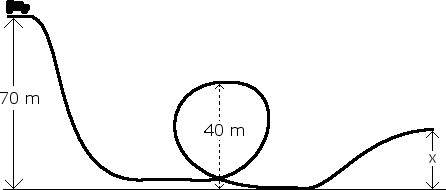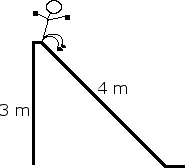Orbital Energy
A 60 kg object is to be launched into orbit, 7 x 10 m above the Earth's surface. Given that the radius of the earth is 6.4 x 10 m and the mass of the earth is 6.0 x 10 kg, find:
A. The work done to put the object into orbit.
B. The velocity required to put the object into orbit.
C. The velocity of the object once it is in orbit.
Related Problems
The 100 kg box shown below is being pulled along the x-axis by a student. The box slides across a rough surface, and its position varies with time according to the equation , where is in meters and is in seconds.

C. Calculate the net work done on the box in the interval = 0 to = 2 s would be greater than, less than, or equal to the answer in part (C). Justify your answer.
The figure below depicts a roller coaster. Assume the roller coaster starts at a velocity of 0 m/s from 70 m.

B. Determine the height of the track at point x. It is known that the roller coaster has a velocity of 30 m/s at x.
A 20 kg student is about to go down a slide. There is a 3 N frictional force opposing his movement. Assume his velocity at the top of the slide is 0 m/s. Find his velocity at the bottom of the slide.

A student is about to be launched from a spring loaded canon. The student weighs 60 kg and the spring constant is 200 N/kg. Find the students velocity the moment he leaves the canon if the spring is compressed, x = 3 m. Also find the students velocity after the spring has decompressed to x = 2 m.
